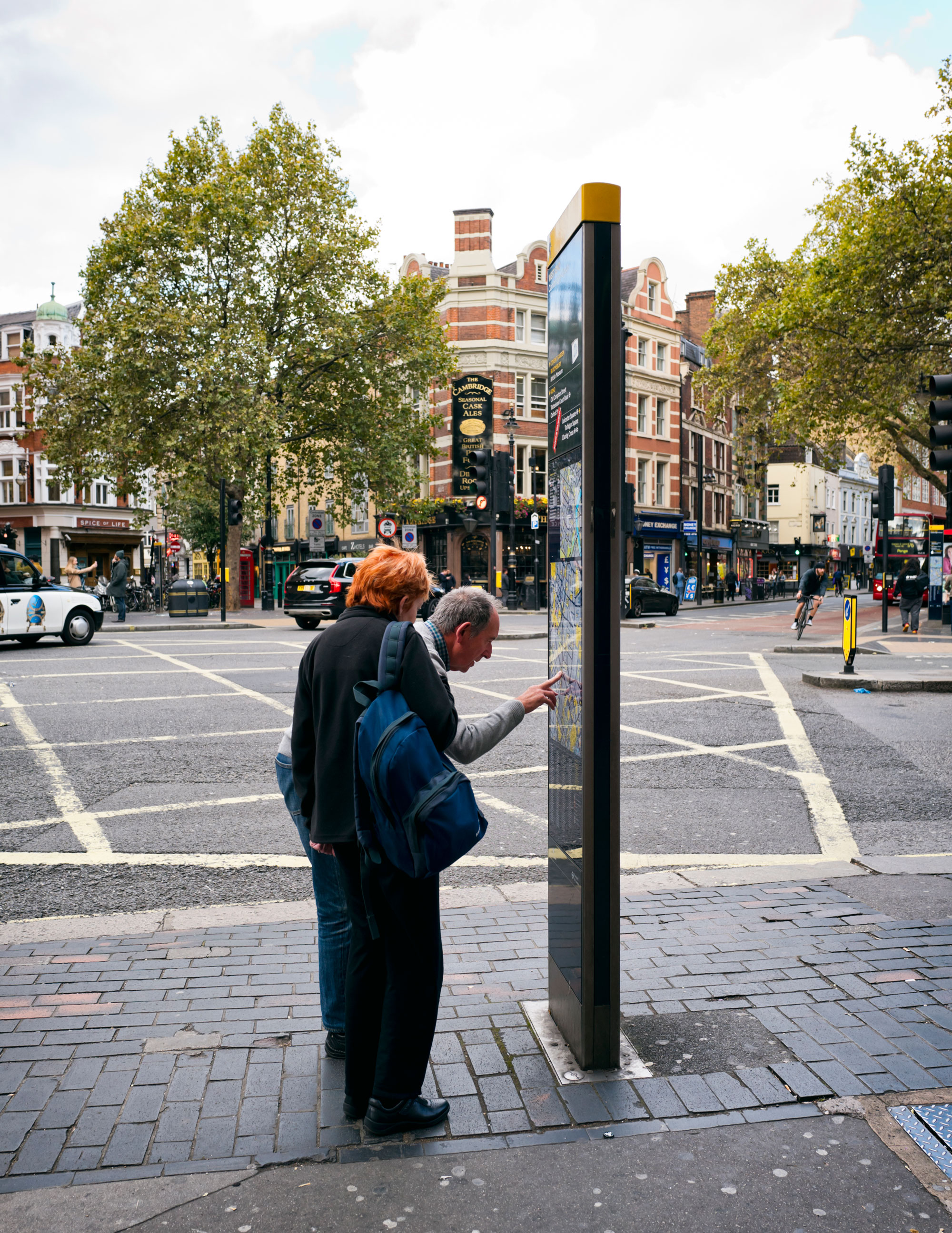Get updates from The Developer straight to your inbox Yes, please!
How New York changed the face of London
In July 2000, Patricia Brown and colleagues in Central London Partnership imported Building Improvement Districts from New York to London. Since then, BIDs have transformed Trafalgar Square and spread across the UK

With fountain pen poised over the letter, he looked up. “He’ll never agree to this,” he said.
“Let’s at least try,” was my response.
With that, John Egan, the then-chair of Central London Partnership (CLP) and CEO of British Airports Authority, put his signature to a letter to then-chair of British Airways (BA), Colin Marshall. The letter was a request to provide CLP with 15 or so free return flights to New York.
Egan was right – we didn’t get them. Well, not all of them, at least.
Instead, BA gave us 10, thus enabling a group of public and private sector colleagues to travel to London’s ‘twin city’ to study its highly successful network of business improvement districts (BIDs). This visit, which took place in July 2000, helped to lay the foundations of a new way for the public and private sectors to work together, in London and throughout the UK.
But why did two of the UK’s foremost business leaders bother to invest their valuable time – and flights – in the project?
To answer that, we have to go back a few years to 1997 when a group of business leaders took a cold, hard look at the heart of the capital city and felt it needed some attention. Did London have what it takes to remain a successful city, one that could continue to attract talented people to live and work, as well as people to visit? Did it have the right conditions to give existing businesses the best chance of success or to attract new investment?
Marshall was also the chair of London’s inward investment agency, while Egan chaired the London Tourist Board. Both knew London could not afford to be complacent. Others agreed – unless we paid attention, we could easily fall behind other cities that were snapping at our heels, as both a business destination and a tourism hub.
To keep London on the front foot, businesses needed to engage with the people tasked with managing the city – the public agencies. This led to the birth of CLP, a public-private partnership focused on the core of London.
CLP brought together senior leaders from sectors and bodies including local and central government, hospitality, cultural flagships, financial services, universities, retail and theatre owners, transport bodies and the police. All had a common, vested interest in the future of the city, and CLP would take the necessary actions to sustain and improve London’s prospects.
CLP’s actions and priorities were determined in its Action Plan for Central London, published in 1998. This was the fruit of extensive engagement with hundreds of organisations from across the public, private and voluntary sectors, to determine what they and therefore London needed to remain one of the world’s foremost cities. Its stock-in-trade was enlightened self-interest.
Let’s get back to New York, and those flights. The action plan included a key priority of improving London’s built environment through measures such as a better streetscape, reducing the dominance of cars, and managing litter and roadworks. This would give people a sense of safety and of being welcomed, by generally making London a nicer and easier place in which to walk and linger.
With the private sector ready to invest in the plan, we started to develop voluntary partnerships to take advantage of local opportunities. Yet it was obvious we needed a sustainable and equitable way of scaling up through new funding and management mechanisms.
BIDs seemed a likely bet. This model of urban management initially started in Canada, but quickly took root in the US, especially New York, and some BIDs have become significant economic development entities. The idea is simple: if most businesses in a defined commercial area agree to pay more tax, the money raised is used to improve, manage and promote that area.
And what better way of exploring their potential for London than to see them in action in its twin city?
The trip was a huge success: we learned so much, and eyes and minds were opened to many different aspects of city-making. BIDs seemed the perfect solution for parts of London’s central business district, despite the fact that there was no formal mechanism or legislative framework in place for their creation at that time.
Nonetheless, our enthusiasm was pumped up by the experience and we attracted the attention of central government. That led to an invitation to bid for money to test BIDs ourselves. We established The Circle Initiative, an umbrella of five pilot BID-like partnerships, backed by £5m of central government funds against a leverage of 2:1 in private money.
The London-New York learning continued. The largest BID in the US, the Alliance for Downtown New York, formalised a partnership with CLP, seconding staff for brief sojourns to provide expertise. Flights were again courtesy of BA, with CLP’s many hospitality partners providing accommodation pro bono.
“The trip was a huge success: we learned so much, and eyes and minds were opened to many different aspects of city-making. BIDs seemed the perfect solution for parts of London’s central business district, despite the fact that there was no formal mechanism or legislative framework in place for their creation at that time”
The five pilots worked closely together to share lessons – the good and the bad. They then took that experience to other areas, experimenting with pilot BIDs. Although on-the-ground experience was always better, we developed guides to best practice in areas such as legislation, to support the development of the concept.
The pilots made mistakes, mostly because they wanted to run, not walk. One was obsessed with creating a complicated website, before the basics were even in place. Some over-promised. Much depended on local circumstance and partners – whether local government or the private sector.
It takes time to build relationships and trust, and these things can’t be hurried. This often frustrated the private sector and it took time for some to learn how to work in partnership and meet in the middle.
So much depended on having the right leadership and governance. Whether it was the chair, CEO, or the board, getting the people skills right was – and remains – essential.
It was more than four years before legislation was in place to allow fully fledged BIDs to be established. Our BIDs all won their BID ballots in early 2005, but from those early beginnings, there are now more than 300 BIDs in the UK. In London alone, they bring in tens of millions of additional, private sector cash every year.

Areas with BIDs have a much more direct relationship with local government and can help to steer the destinies of their areas. BIDs are also the glue that enables many different parties to work together on various aspects of development.
Effective BIDs are good lobbyists, often bringing in significant investment from the public purse to match private investment for local needs. This may pay for projects such as street improvements, cultural projects and additional policing. They are a mechanism for thinking about the overall needs of a district – the receptacle for its vision and future shape.
However, BIDs are not a panacea and have failed where they have been established in the wrong places or for the wrong reasons. An area cannot sustain a BID if the business base is not large enough to provide sufficient income. Nearly 20 years on, I worry that we have not grown sufficient leadership to take on some of the complexities of the larger BIDs or be creative leaders in the face of urban challenges, regardless of size and scale.
The ultimate aim of a BID is to improve an area. If it succeeds, that often leads to higher rents. BIDs are also embracing the positive notion of placemaking that has gripped our towns and cities, but the combination can so easily flip over to gentrification. Existing businesses and services are then priced out, which is leading to pushback in some areas and BIDs being seen as less benign.
That said, BIDs cannot be held responsible for global economic and market forces. They can drill down into the different needs and nuances of a neighbourhood and its communities, acting swiftly in response to local needs.
CLP went on to do many more things than establishing BIDs. Yet, BIDs are part of its legacy and the perfect testament to how the private sector acted to provide a fresh impetus to civic renewal – and crucially, what the power of public-private partnerships can achieve.
Patricia Brown is director of Central, a consultancy centred on the dynamics of cities and the process of achieving change. She was CEO of Central London Partnership from 1997-2008
Festival of Place
How do you create cities that thrive; where people want
to live, work, play and learn?
Don't miss the Festival of Place on 9 July
Book your ticket now
Sign up to our newsletter
Get updates from The Developer straight to your inbox
Thanks to our organisation members
Become a member
© Festival of Place - Tweak Ltd., 124 City Road, London, EC1V 2NX. Tel: 020 3326 7238



